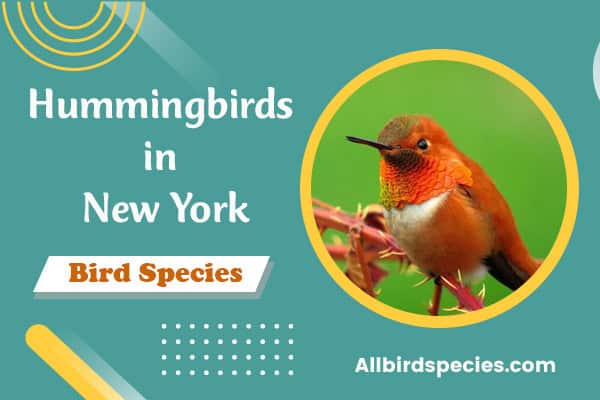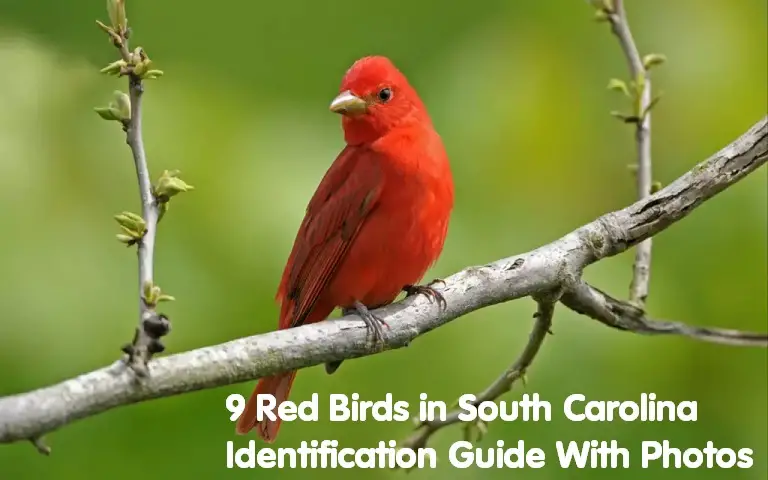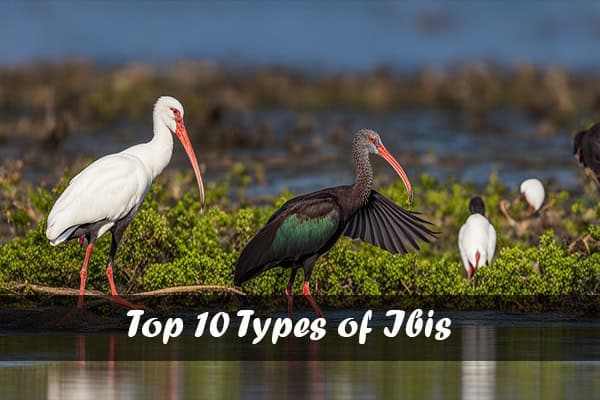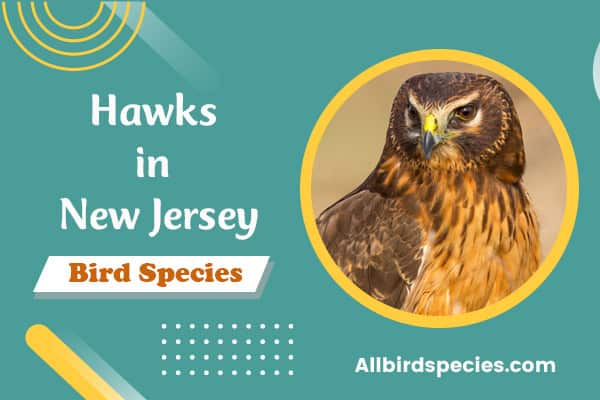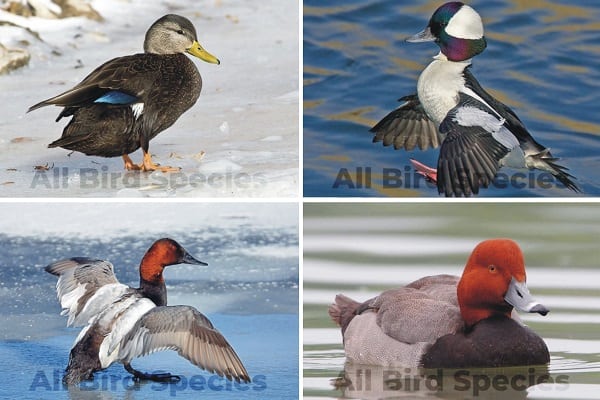4 Types of Hummingbirds in New York (With Pictures)
Hummingbirds in New York are some of nature’s most fascinating creatures, known for their vibrant colours and incredible agility. In New York, these tiny birds bring joy to gardens and parks alike during the warmer months.
Each spring, they migrate from Central America and Mexico to breed in North America. As they arrive, birdwatchers eagerly anticipate their colourful displays.
New York is home to several species of hummingbirds that grace our landscapes with their presence. From the iconic Ruby-throated Hummingbird to the more elusive Rufous Hummingbird, each type boasts unique characteristics.
These birds play a crucial role in pollination while enchanting viewers with their aerial acrobatics and swift movements. Whether you’re an avid birdwatcher or simply enjoy observing wildlife, hummingbirds add splendour to any outdoor setting across New York State.
Different Types of Hummingbirds in New York
New York is home to various hummingbirds, each featuring distinctive traits. The most common among them is the Ruby-throated Hummingbird. This vibrant bird showcases a striking emerald green back and a bright ruby red throat in males.
Another visitor is the Rufous Hummingbird, known for its fiery orange plumage and feisty personality. Often spotted during migration, these little warriors are as bold as they are beautiful.
The Calliope Hummingbird stands out with its petite size and unique violet crown. It’s one of North America’s smallest birds, often seen darting around flowers in search of nectar.
The Black-chinned Hummingbird occasionally appears with its sleek black chin and iridescent purple throat in males. Each species adds a unique touch to New York’s avian landscape and brings joy to those lucky enough to spot them.
Physical Characteristics and Behaviors of Each Type
The Ruby-throated Hummingbird dazzles with its iridescent green back and striking ruby-red throat. Males are often more colorful than females, showcasing a vibrant display during mating rituals.
Rufous Hummingbirds sport fiery orange feathers that make them stand out among their peers. They are known for their aggressive behavior, fiercely defending their feeding territories from intruders.
Calliope Hummingbirds are the smallest in North America, measuring just three inches long. Their unique characteristic is the magenta streaks on the throat, which shimmer beautifully under sunlight.
Black-chinned Hummingbirds feature a glossy black chin and violet crown. These birds exhibit sociable behaviors, often seen flitting around flowers and feeders in search of nectar.
Each species has distinct traits that not only define them but also influence how they interact with their environment and each other. Understanding these nuances enhances your appreciation of these remarkable creatures.
1. Ruby-throated Hummingbird
The Ruby-throated Hummingbird is a true jewel of New York’s avian world. This small bird, measuring around 3 to 4 inches in length, dazzles with its iridescent green back and striking ruby-red throat.
Males sport the vibrant throat that gives them their name. Females have more subdued plumage but are equally charming. Their rapid wing beats create a humming sound that hints at their energetic nature.

These birds are known for their incredible flying abilities. They can hover in mid-air and even fly backwards! Such agility helps them feed on nectar from flowers while also acting as pollinators.
Typically present during spring and summer, Ruby-throated Hummingbirds migrate long distances to reach New York after wintering in Central America. Their arrival signals the beginning of warmer days filled with life and color in gardens across the state.
2. Rufous Hummingbird
The Rufous Hummingbird is a striking little bird known for its vibrant orange and rust-coloured plumage. These beauties can be quite feisty, often dominating feeding areas despite their small size.
Typically found in the western regions of North America during migration, some make their way to New York. They are particularly attracted to tubular flowers that provide ample nectar.

Their energetic flight patterns showcase incredible agility as they dart from flower to flower. You might notice them hovering with precision or making quick aerial maneuvers.
Rufous Hummingbirds are also known for their long migratory journeys, covering extensive distances between breeding and wintering grounds. Witnessing one flitting through your garden can bring a delightful burst of color and energy to any space.
3. Calliope Hummingbird
The Calliope Hummingbird is one of the smallest birds in North America, measuring just about 3 inches long. This tiny marvel boasts vibrant green feathers and a striking magenta throat that catches the eye instantly.
During migration, they travel remarkable distances from their breeding grounds in the western United States to wintering areas in Mexico. Their journey can cover over 3,000 miles!

These hummingbirds are known for their energetic behavior. They often engage in aerial displays and chase each other around with astonishing speed. Males especially show off their dazzling colors during courtship rituals.
Calliope Hummingbirds have a distinct preference for flowers rich in nectar, such as trumpet vines and columbines. If you’re lucky enough to spot one flitting among your garden blooms, consider it a rare treat!
Related: Hummingbirds In Kansas
4. Black-chinned Hummingbird
The Black-chinned Hummingbird is a captivating sight. With its striking iridescent green body and distinctive black chin, it stands out among its peers. This species typically measures about 3 to 4 inches long, making it one of the smaller hummingbirds.
During mating season, males display their vibrant throat feathers to attract females. The flash of colour can be mesmerizing as they dart through gardens with impressive agility.
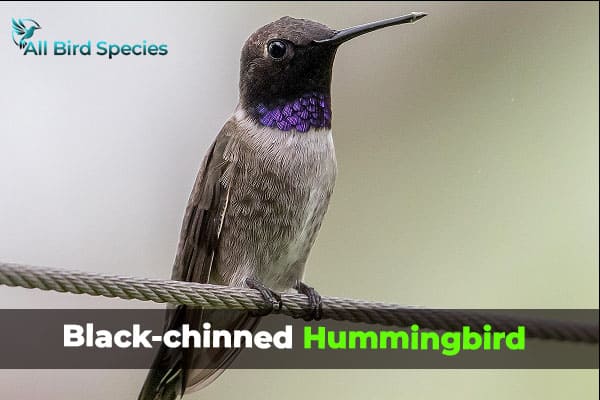
These birds are primarily found in open woodlands and shrubby areas. They prefer habitats rich in nectar-producing flowers like salvia and columbine.
Black-chinned Hummingbirds are often spotted buzzing around feeders filled with sugar water. Their presence signals a lively ecosystem, showcasing nature’s intricate balance at play.
Tips for Attracting Hummingbirds to Your Yard
To attract hummingbirds to your yard, start by planting vibrant flowers. They love brightly coloured blooms like red, orange, and pink.
Consider adding a hummingbird feeder filled with sugar water. Mix four parts of water to one part of sugar for the perfect nectar. Avoid artificial colours; they can be harmful.
Position feeders in shaded areas to prevent the nectar from spoiling quickly. Regularly clean them every few days to keep them fresh and inviting.
Provide natural shelter by incorporating shrubs or trees nearby. Hummingbirds seek safe spots for resting between feedings.
Water features like fountains or birdbaths can also draw these beautiful birds in. The sound of flowing water is appealing and refreshing on warm days.
Patience is key! It might take some time before you see these enchanting visitors flitting around your garden.
Where to Spot Hummingbirds in New York
Hummingbirds in New York can be elusive, but there are key spots where you’re likely to see them. Gardens filled with vibrant flowers and native plants attract these tiny birds like a magnet.
Look for them fluttering around trumpet vines, bee balm, and petunias. These blooms provide the nectar they crave.
Parks are also great places to spot hummingbirds, especially during spring and summer. Areas like Central Park or Prospect Park often have diverse flora that draws them in.
Don’t forget about your backyard! Installing feeders filled with sugar water can create your own little oasis for these beauties.
Early mornings or late afternoons are prime times for sightings when they tend to be most active. Keep your eyes peeled; you might just catch a glimpse of their dazzling colors as they zip from flower to flower.
Conclusion
Hummingbirds in New York are a captivating subject for nature lovers and birdwatchers alike. With various species showcasing unique characteristics, these tiny birds add vibrancy to the state’s natural landscape. The Ruby-throated Hummingbird stands out as the most common, but the Rufous, Calliope, and Black-chinned hummingbirds also make their presence known at different times of the year.
Understanding how to spot these beautiful creatures can enhance your outdoor experience. Knowing where to look is essential—gardens filled with native flowers or areas near water sources tend to attract them more frequently.
If you’re eager to attract hummingbirds to your yard, you must create an inviting environment. Consider planting nectar-rich plants and installing feeders filled with sugar-water solutions. Keeping everything clean will ensure that they return for more visits.
Protecting their habitats should be imperative for every nature enthusiast. Preserving natural spaces ensures that future generations can enjoy watching these mesmerizing birds darting through gardens and forests.
Read More🐦Related Articles:
- Owls in New Jersey
- Woodpeckers in Arizona
- Snowy Owls (Bubo scandiacus) All You Need To Know
- Crocodile Skink Facts, Size, Lifespan
- What Do Hawks Eat
- Yellow Birds in Colorado
Frequently Asked Questions
Q1. Are there any hummingbirds in NYC?
Yes, hummingbirds can be found in NYC, particularly during migration seasons.
Q2. How long do hummingbirds stay in NY?
Hummingbirds typically stay in New York from late spring to early fall, depending on the species.
Q3. What hummingbirds are in upstate New York?
The Ruby-throated Hummingbird is the most common species in upstate New York.
Q4. Does Long Island, NY have hummingbirds?
Yes, Long Island is home to hummingbirds, primarily the Ruby-throated Hummingbird during the warmer months.

